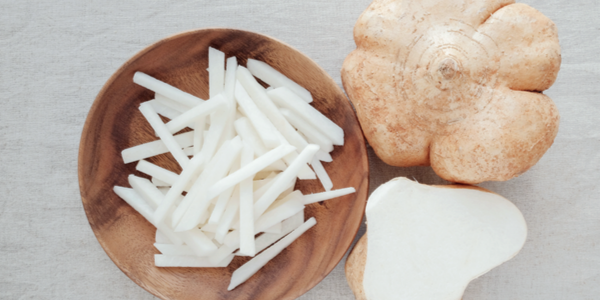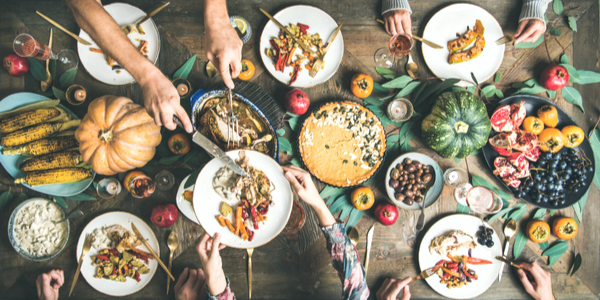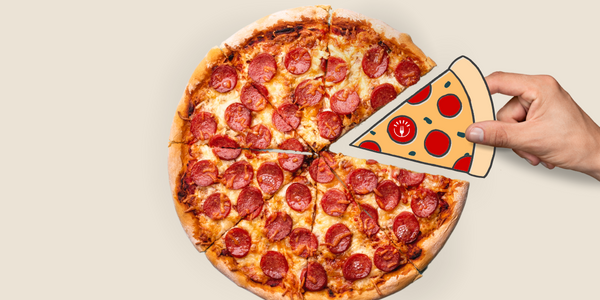
What is jicama fruit? You may have seen it in the supermarket, but do you know about the nutrition, calories, or benefits? Are you wondering, "What does jicama taste like?"
Read on to have all these questions (and more) answered, including the top four benefits of jicama and tips on how to enjoy it.
What Is Jicama?
Jicama is a root vegetable, similar to other vegetables in this category such as white potato, sweet potato, and carrots.
Native to Mexico, some of the first recorded material mentioning jicama is from the Aztecs. In fact, the word jicama is a Spanish word that comes from the Aztec "xicama."
Around the time of the 16th century, the jicama began to be known by other names as it was traded far and wide across the world. Today, you might hear jicama being referred to as:
• Yam bean
• Mexican turnip
• Mexican potato
• Mexican water chestnut
• Chinese potato
• Chinese turnip
Taste-wise, people compare it to a mix of the following fruits and vegetables:
• Pear
• Apple
• Potato
• Water chestnut
Jicama has a sweet, nutty crunch and is certainly unique but is technically not a root veggie…
Jicama Is a Member of the Bean Family
Wait, what? You are probably thinking, "You just explained that jicama is a root vegetable…"
Like peanuts, which are technically a legume but considered a nut, jicama is cousins to green beans, peas, black beans, and chickpeas. You will likely become most familiar with eating the root part of the plant, but the bean pods are also edible and contain nutrients.
The Benefits of Jicama
Beyond being one of a kind in the produce department, jicama has other stand-out qualities. Here are some of our favorite aspects of the jicama and why it can be a healthy choice for almost any diet.
1. Versatile
Due to their unique texture and taste, jicamas are very versatile! You can toss them in place of water chestnuts in a stir-fry or simply enjoy them cut into slices as a refreshing spring or summer snack.
2. Low In Calories
An added benefit of jicama is that it is low in calories. According to the USDA's FoodData Central, 1 cup of sliced jicama (about 120 grams) contains 108 calories.
3. Packed with Fiber
Jicama is a fiber powerhouse, containing almost 6 grams per 1 cup sliced. Increasing fiber intake supports heart, digestive, and overall health.
Also being low in calories and high in fiber, jicama is also helpful food for weight loss and management. Reaching and maintaining a healthy weight reduces the risk of related health conditions.
4. Rich in Vitamins & Minerals
Jicama nutrition includes important vitamins and minerals, such as higher concentrations of the following nutrients:
• Vitamin C
• Folate (vitamin B9)
• Iron
• Potassium
Being a rich source of vitamins and minerals, jicama may be helpful for improving blood pressure, supporting heart health, boosting the immune system, and much more.
How to Enjoy Jicama
Jicama may seem like an intimidating item at first. However, a few of the following tips can help to get you started savoring the delicious taste.
1. Understand the Peeling Process
To prepare the jicama, simply peel off the layer of brown skin on the outside using a standard fruit or vegetable peeler.
Depending on the variety of jicama you choose, there may be an additional layer of skin to peel that is tough, fibrous, and lies underneath the first layer.
2. Store Properly
Since jicama seems like an elusive veggie, it can be hard to know how to store it as a first-time buyer.
To preserve your jicama before eating, be sure to place it in a refrigerator, preferably in the crisper drawer. They can stay fresh for up to 2-3 weeks, and cut jicamas can be saved in plastic wrap and stored in the fridge for up to a week.
3. Eat Fresh During the Winter
It is easy to get the winter blues when you feel like you cannot enjoy your fresh food favorites. Branch out a bit by trying jicama during their peak season!
Jicama thrives in the winter, making them seasonally available starting around November through early spring. It can be eaten raw with a touch of salt or try one of the more unique methods below!
4. Explore Exotic Preparation Methods
Preparation methods range from simply switching up spices to using a spiralizer for jicama fries. Additional, adventurous preparation methods include:
• Boiling
• Mashing
• Pairing with citrus
• Dipping in creamy avocado sauce
• Sprinkling with chile powder and lime juice
• Pickling
• Lacto-fermenting
• Tossing into a Thai salad or jicama slaw
A Final Word on the Fantastic Jicama
As you can see, there are many wonderful ways to use and eat the jicama plant. Beyond a stellar nutritional profile, it is suited for both beginners and adventurous eaters (and everyone in between, too).
Select a preparation method for this unique piece of produce today and get started!
References:
Groves. 8 Health and Nutrition Benefits of Jicama. Healthline. Written May 30, 2018. https://www.healthline.com/nutrition/jicama-nutrition-benefits.
Jicama (Root Vegetables). Published December 2015. SNAP. Iowa Departments of Human Services and Public Health. https://idph.iowa.gov/Portals/1/userfiles/94/School%20Grant%20Program/Year%201%20Lessons/K-1%20Jicama%20complete%20lesson.pdf.
Real Food Encyclopedia | Jicama. FoodPrint. https://foodprint.org/real-food/jicama/.







